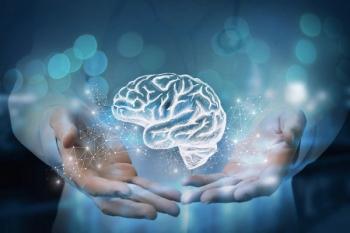
- Vol 34 No 3
- Volume 34
- Issue 3
THE QUIZ: Headaches
Migraine, tension-type, cluster...test your clinical acumen about headaches with these 16 questions.
Along with back pain, headaches are the most common form of chronic, recurring pain. Although many people think that headaches invariably indicate some severe underlying pathology such as a brain tumor, in fact most headaches are primary ones that have no such identifiable pathology and do not require further workup. Furthermore, the most common type of secondary headaches, medication overuse headaches, result from the treatment of primary headaches. It is also important to note that when severe underlying pathology is present, there are usually “red flags” that indicate the need for further workup.
1.Which of the following are considered “red flags” that indicate the possibility that severe underlying pathology may be the cause of a headache?
A. A change in mental status
B. The worst headache the person has ever experienced
C. Presence of fever
D. First onset of headache after age 50
E. All of the above
Disclosures:
Dr. King is in private practice in New York, and he is Clinical Professor of Psychiatry at the New York University School of Medicine.
References:
1. Rice ASC, Smith BH, Blyth FM. Pain and the global burden of disease. Pain. 2016;157:791-796.
2. Turner DP, Smitherman TA, Black AK, et al. Are migraine and tension-type headache diagnostic types or points on a severity continuum? An exploration of the latent taxometric structure of headache. Pain. 2015;156:1200-1207.
3. Loden E, Rizzoli P. Tension type headache. BMJ. 2008;336:88-92.
4. Estermalik E, Tepper S. Preventive treatment in migraine and the new U.S. guidelines. Neuropsychiat Dis Treat. 2013;9:709-720.
5. Marmura MJ, Silberstein SD, Schwedt TJ. The acute treatment of migraine in adults: the American Headache Society evidence assessment of migraine pharmacotherapies. Headache. 2015;55:3-20.
6. Powers SW, Kashikar-Zuck SM, Allen JR, et al. Cognitive behavioral therapy plus amitriptyline for chronic migraine in children and adolescents: a randomized clinical trial. JAMA. 2013;310:2622-2630.
7. Mawet J, Kurth T, Ayata C. Migraine and stroke: in search of shared mechanisms. Cephalalgia. 2015;35:165-181.
8. Kurth T, Winter AC, Eliassen AH, et al. Migraine and risk of cardiovascular disease in women: prospective cohort study. BMJ. 2016;353:i2610.
9. Buse DC, Reed ML, Fanning KM, et al. Cardiovascular events, conditions, and procedures among people with episodic migraine in the US population: results from the American Migraine Prevalence and Prevention (AMPP) study. Headache. 2016;57:31-44.
10. Linde K, Allais G, Brinkhous B, et al. Acupuncture for the prevention of episodic migraine. Cochrane Database System Rev. 2016;6:CD001218.
11. Nesbitt AD, Goadsby PJ. Cluster headache. BMJ. 2012;344:e2407.
12. Kristoffersen ES, Lundqvist C. Medication-overuse headache: a review. J Pain Res. 2014;7:367-378.
Articles in this issue
almost 9 years ago
Psychogenic Non-Epileptic Seizures: Clinical Issues for Psychiatristsalmost 9 years ago
Update on Medical Catatonia: Highlight on Deliriumalmost 9 years ago
Depression and Anxiety Disorders in Patients With Canceralmost 9 years ago
Your Money or Your Life: A Reflection on the Health Care Industryalmost 9 years ago
Westworld: Hell Hath No Limitsalmost 9 years ago
Sound of Silencealmost 9 years ago
Maintenance of CertificationNewsletter
Receive trusted psychiatric news, expert analysis, and clinical insights — subscribe today to support your practice and your patients.

















